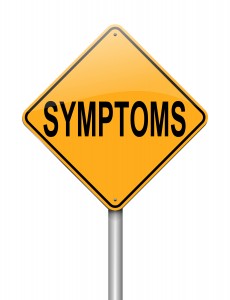As highlighted in our earlier post, this Christmas your friends, family and others around you are at risk of either a first or more frequent epileptic seizures due to everything that December brings; flashing lights, stress, excitement, and over doing the food & alcohol.
 So rather than being faced with a situation where you feel lost and unable to help, we have created a Christmas How-To Guide for understanding epilepsy including everything from reducing the risk of seizures through to what you should do if someone you are with has a seizure.
So rather than being faced with a situation where you feel lost and unable to help, we have created a Christmas How-To Guide for understanding epilepsy including everything from reducing the risk of seizures through to what you should do if someone you are with has a seizure.
Did you know that there are more than 40 types of seizure?
With more than 40 types of epileptic seizure it is important to recognise the varying signs and symptoms; whilst we understand you can?t necessarily know all 40 just a few basic tips for identification can help greatly. Some seizures such as convulsions are much more obvious than others, but this doesn?t mean that the seizure is any less serious.
If you know someone with epilepsy make sure you find out as much as you can; what type of seizures they suffer; how long they generally last and what are their triggers for example (you can find a more detailed list of other key questions to ask in our How-To Guide).
However we appreciate you can?t always find out this information, especially when faced with assisting a stranger.
The First Step in Being Able to Help is to Recognise the Symptoms
A variety of behaviours may occur prior to an attack which depends entirely upon the trigger and type of seizure. Many symptoms are difficult to spot, especially when you aren’t experiencing changes yourself.
Doctors recognise two main types of seizures; partial (or focal) seizures and generalised seizures. Generally, you will remain conscious during a partial seizure although people with epilepsy might not necessarily remember what has happened. Simple partial seizures are often called “warnings” as they regularly precede another type of seizure. Look out for stiffness or twitching in a part of the body such as an arm of hand; tingling sensations of “pins and needles” or sudden intense feelings of fear or joy. More complex partial seizures often result in a loss of awareness and random bodily behaviour can occur such as the smacking of lips, making noises, and adopting an unusual stance.
Generalised seizures occur when the majority of the brain is affected and can result in a number of seizures where the person is unaware of their surroundings, loses consciousness, or rapidly jerk parts of their body. Many forms of generalised seizures can result in injury as people are likely to fall when faced with the stiffening or relaxing of the muscles.
What Should You Do To Help?
Often the only thing you can do is to stay with someone when they experience an epileptic seizure making sure to comfort and reassure them when they come round. If possible you should guide them away from any obvious danger and then afterwards look after any injuries sustained.
It’s rare that you’d have to call 999 as seizures usually only last a couple of minutes and people come round shortly after. Be sure to call for an ambulance however if someone’s seizures lasts longer than 5 minutes or if they have been injured.
Further information on understanding epilepsy and how you could help in the event of a seizure take a look out our Christmas How-To Guide where you?ll find an abundance of information, case studies and useful tips. You can also find additional information by visiting Epilepsy Research UK.

